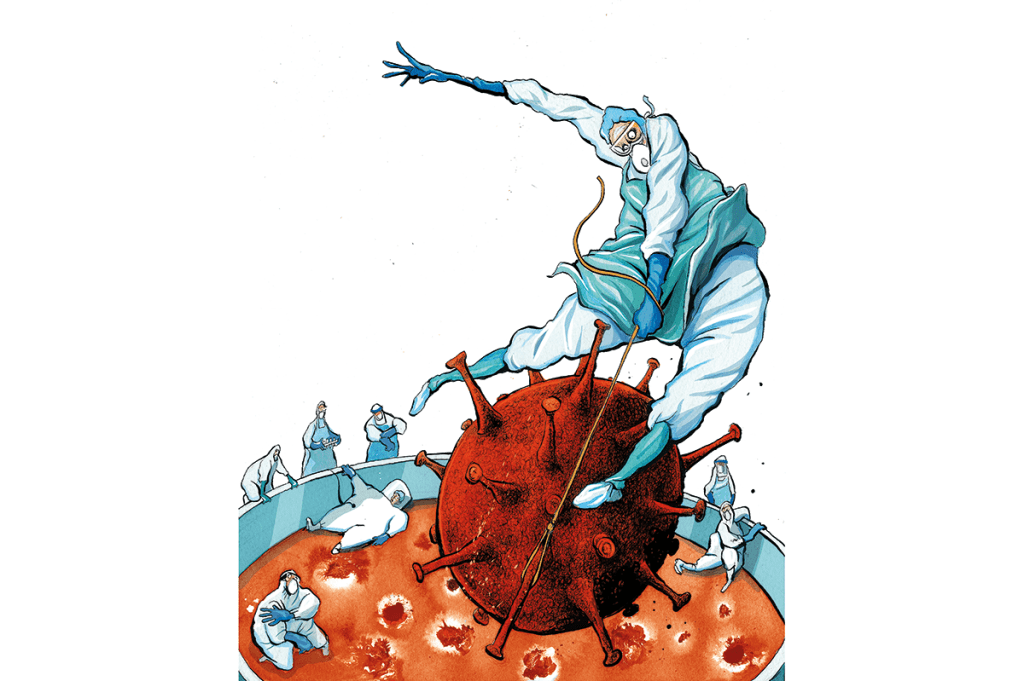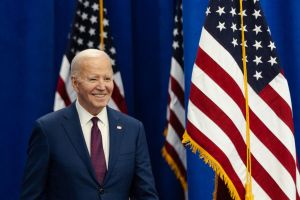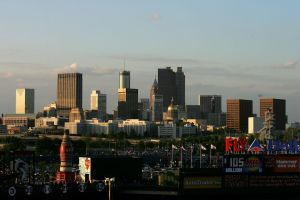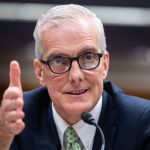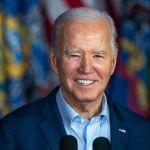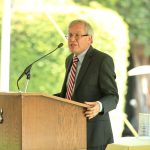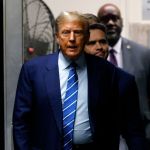On Friday January 3, 2020, Dr. Robert Redfield, director of the US Centers for Disease Control and Prevention, phoned Alex Azar, secretary of the Department of Health and Human Services. With the words, “we have a problem in China,” Redfield broke to the secretary and those of us on his immediate staff news that was about to change the world. At the time, neither Redfield nor anyone else knew much about the characteristics of the virus that would become known formally as SARS-CoV-2, but he knew enough to sense that we needed to respond, and quickly.
Thus began an odyssey of pandemic response actions, strategies and regulatory processes that would consume HHS, where I worked, along with much of the rest of the administration, until Inauguration Day 2021. Only one of them, Operation Warp Speed, which delivered more safe and effective vaccines more quickly than almost all the world’s experts thought possible, has been universally acclaimed as a resounding success. This did not happen by accident.
Several weeks into a series of inadequate attempts to get out in front of the virus, two newly apparent characteristics of SARS-CoV-2 altered our perspective completely. First, the virus was spreading asymptomatically — someone who had no idea he was infected could easily infect others. Second, its clinical impact was asymmetric — it killed some within days and caused nothing but sniffles in others. This is when our imperative became clear: the only effective way to control this virus and its destructive impact on lives and the economy would be to develop and manufacture hundreds of millions of doses of safe and effective vaccines as quickly as possible.
At this point, the Trump administration — the Azar team in particular — had already begun evolving what would prove the world’s most innovative and effective response to the crisis: the record-time research, development, mass production, universal distribution and administration of a set of highly effective vaccines. Before the year was out, the public-private partnership we dubbed “Operation Warp Speed” was delivering two distinct Covid vaccines throughout the nation. An additional Warp Speed vaccine received approval and was in use by early 2021.
Operation Warp Speed was the most successful emergency vaccine development and deployment effort in history — and the most successful biomedical public-private partnership ever. To put its performance in perspective, think of when Roger Bannister ran the first four-minute mile. That was in 1954. Sixty-eight years later, the record is not much changed at three minutes, forty-three seconds. If we equate today’s record mile to the previous record for vaccine development, Warp Speed’s performance would be the equivalent of running the mile in forty-five seconds, an 80 percent improvement.
How do we measure the value of this speed? In lives? An August 2021 study by the National Institutes of Health asserts that the three Operation Warp Speed vaccines saved approximately 140,000 lives during their first six months alone, from December 2020 until May 2021. As of late May 2022, even after some waning protection of the initial doses, close to 90 percent of all Covid deaths were among the unvaccinated.
Or should it be measured in dollars? In summer 2021 University of Chicago economists and veterans of the Trump Council of Economic Advisors Casey B. Mulligan and Tomas J. Philipson estimated that “accelerating the arrival of the vaccines by six months was worth $1.8 trillion to the US economy — and more to the rest of the world.” Those dollars allowed thousands of stores, restaurants and small businesses to keep their doors open and, throughout the economy, translated to hundreds of thousands, perhaps millions, of jobs saved or restored.
Many have attributed Operation Warp Speed’s success to some sort of unnamed “miracle”; a deus ex machina arbitrarily introduced to unravel the mysteries of vaccine development, the vagaries of biological manufacturing and the logistical complexities of distribution. Others attribute it to little more than good luck. The core members of the Warp Speed team bristle at these suggestions of miracles and luck. They know that the project was not so much a scientific miracle as it was a meticulously designed initiative. Success was the result of a deliberate strategy, exacting execution, a superior team that worked together exceptionally well, a unique public-private partnership — and the remarkable leadership of a president and a cabinet secretary. It overcame media melodrama, outside political manipulation, internal squabbles and unprecedented logistical hurdles to produce unimaginable success in the middle of a pandemic that had all but paralyzed the entire world.
Some say we achieved success at the expense of safety. This could not be farther from the truth. The minimum number of enrollees in the Warp Speed clinical trials, per the FDA’s requirements, was half again larger than in normal vaccine trials. The interval from when the median trial participant received his second dose until the FDA would grant emergency use authorization was extended beyond that of previous trials. All other required steps and criteria were those of normal trials. Indeed, Peter Marks, who leads the FDA’s vaccine approval unit, restructured his team and its internal processes to work around the clock to accelerate the evaluations. So, while the process of evaluation was restructured, not a single standard of evaluation was compromised. In fact, the standards for approval were in many ways more stringent than in normal evaluations.
There were five simple keys to Operation Warp Speed’s success.
First, both vaccines that reached the population before the end of 2020 — from Pfizer/BioNTech and Moderna — took advantage of the mRNA genetic techniques that had been under development for more than a decade but hadn’t previously been applied to vaccines. Nonetheless, the OWS team had confidence in their potential and made substantial investments in their ultimate success. The advancements represented by the mRNA technology platform enabled vaccine design to be finished in days, not months or years as in the past.
The second key was performing simultaneously tasks that are typically performed sequentially: reserving, equipping and activating factories to fill massive orders of vaccine doses, vials and injection supplies; developing and making specialized packaging; lining up shippers like FedEx and UPS before they were actually needed; setting up tens of thousands of neighborhood sites for administering the shots at familiar places like CVS or Walgreens before the clinical trials revealed whether any vaccine would be safe and effective. The federal government assumed the financial risk associated with this in ways that would have been prohibitive for companies like Moderna.
The third key involved selecting vaccine candidates for investment in ways that spread scientific risk as a venture capitalist might distribute financial risk, over a variety of technologies and companies. We understood that some might fail, but we needed only one to be successful. Some did fail, but the successes delivered spectacular returns.
The fourth key required designing a governance structure that bypassed the slow grind of bureaucratic decision-making. We created a board which included only the essential players from HHS, the Department of Defense and the White House; it reported directly to the president. Decisions on vaccine-candidate selection, resources and distribution strategies were made in hours and days rather than weeks and months.
The fifth and final key was a leadership philosophy comprising three fundamental beliefs. First, OWS delegated key tasks to those who possessed the most knowledge and experience rather than to those with the loftiest titles. This included bringing in private-sector experts to help where the government lacked the talent. Second, we understood that the impact of collaboration and teamwork would far exceed that derived from individual talent. Debating differences of opinion was encouraged, but undermining the integrity of teamwork was not tolerated. Third, the project rigorously prevented the federal government from engaging in activities the private sector could perform better. This last guideline allowed for a unique public-private partnership: the government provided resources, clarity of objective, regulatory context and coordination for success. The private sector brought in its ingenuity and innovative spirit. The result delivered more vaccines to America and the world in less time than at any point in the history of biomedicine. The federal government enabled success; America’s private sector delivered it.
Again, Warp Speed was not so much a scientific miracle as a deliberate, strategically sound, meticulously designed initiative. Its leaders faced a broad spectrum of obstacles and challenges from within and without. It never really eliminated these obstacles and threats to its success, many of which persisted until the end. Rather, it overcame them with its impressive array of ingenuity, hard work, perseverance, principle and resilience.
Among the political strife, criticism of our country’s imperfections and intolerance for diverse perspectives so prevalent today, I hope the commitment, sacrifice and accomplishments of those involved with Operation Warp Speed will be understood both as inspiring and a source of pride in being an American.
This article is an excerpt from Warp Speed: Inside the Operation That Beat Covid, the Critics and the Odds, published by Republic Books and out now. This article was originally published in The Spectator’s July 2022 World edition.
